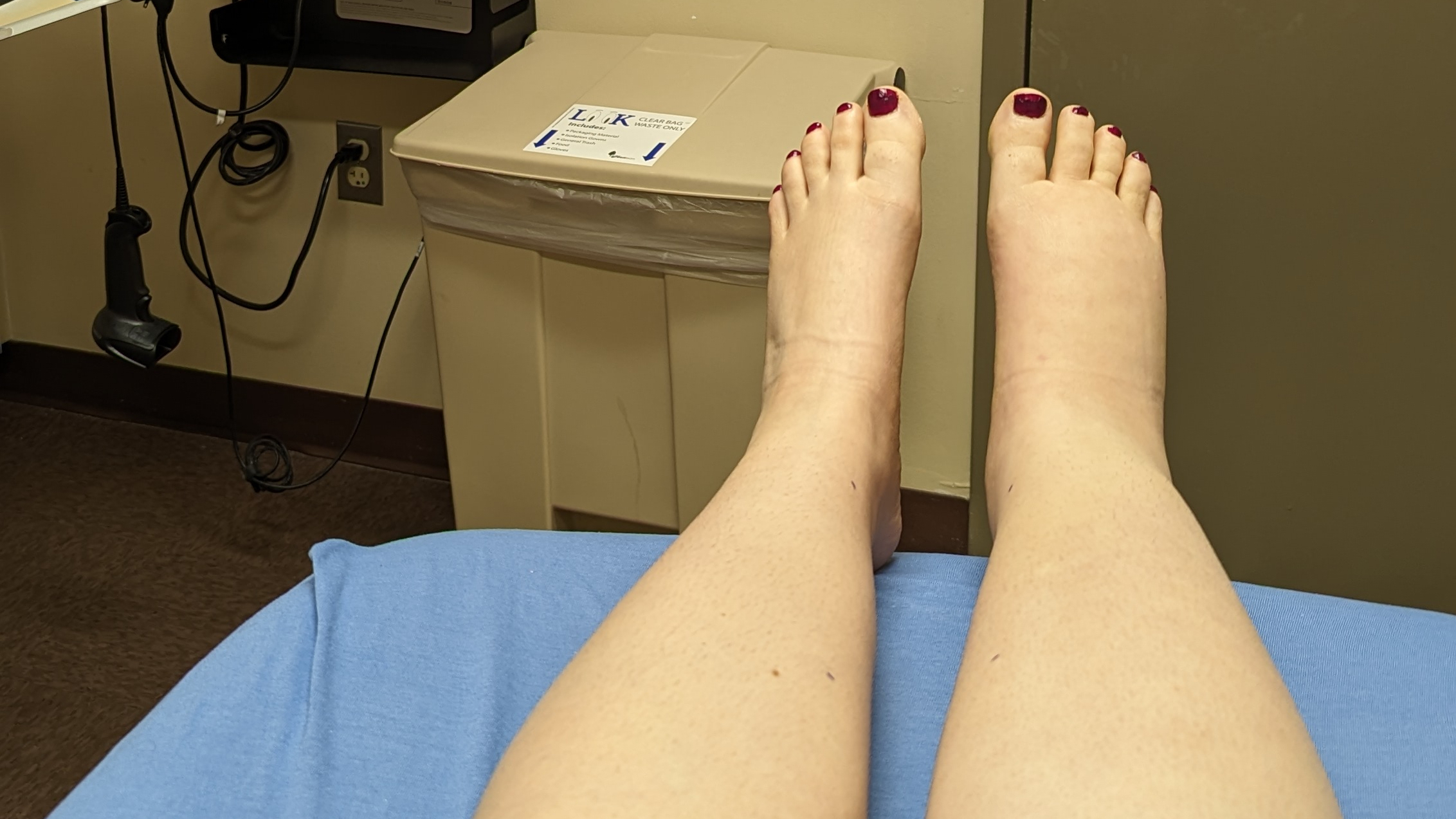While visiting friends in Connecticut last weekend, I had the chance to explore the Wadsworth Atheneum Museum of Art, a gorgeous museum with a vast collection of nearly 50,000 works spanning 5,000 years.
Among their earlier pieces was this little bronze man from the 2nd century BCE, titled Hunchback Examining His Foot. Less than four inches in height, he was positioned on a shelf behind a pane of glass alongside other ancient miniatures.
The statue looks like an old man carefully picking bits of dirt or rocks from his foot. But the longer I looked at it, the more familiar and expressive the small figure became: I saw in him a person focused on checking their foot for cracks in the skin, perhaps to avoid infection risk; I saw someone rubbing tired, swollen feet; I saw myself, examining the defunct lymphatic vessels that press to the surface of my skin in squiggly patterns.
In short, I saw someone with lymphedema.
Now, I know lymphedema was likely not the artist’s intent here, although the figure is certainly relatable to the lymphedema experience. The information card introducing Hunchback said images of “non-ideal figures” became popular in the Hellenistic period, when he was created. “Artists strove to characterize the individual, bringing an element of personal experience and emotion to their work,” it explained.
A non-ideal figure, characterized by their emotion. Perhaps that’s why the small bronze man resonated with me so much: we’re both non-ideal figures (by some standards, anyway), characterized by our personal experiences and emotions.
Living with a chronic medical condition that gets little public awareness means we don’t often see images of people like us, save for the ones we put out there ourselves. We’re a hidden population despite our numbers, and although our patient and advocate community is strong, we remain woefully underrepresented in the mainstream.
In effort to find something I can relate to as a person with lymphedema, I project the lymphedema experience onto the images and objects I see, like the little bronze figure. I look for hints and echoes of us where I can – spotting a heavy-looking leg here, a puffy arm there – to create a retroactive sense of lymphie representation for myself.
The art museum is a wonderful place to look for “hidden lymphies.” The stylized forms and shapes lend themselves well to interpretation, and suddenly I see lymphies within every frame and on every pedestal.
While it’s unlikely that a piece of art was created to literally represent a person with lymphedema, it can be possible. I mean, I went fourteen years before my lymphedema was officially recognized – surely a painting could go decades or centuries before its own diagnosis.
Whether the artwork is intended to depict someone with swelling or not, it still feels meaningful when I see a body that looks like mine or another lymphie friend’s. That’s one of my favorite things about art: it’s subjective, like tea leaves where we each read our own meanings from the dregs.
When I see a woman in an 18th century painting sitting, exhausted, with one shoe kicked off, I’m reminded of how I feel when I finally take off a painful shoe after a long day. In another painting I notice the straps of a woman’s red sandals stretching to fit around her wide ankles, much like my own do. And while viewing Picasso’s The Bather, I’m struck not by the vulnerability of their nakedness, but the familiar fullness of their rounded limbs.
I’m comforted by these images. As a person living with a chronic condition, they help me feel seen – even if it’s just me, seeing myself.
When I left the museum, I couldn’t stop thinking about the artwork and the power of seeing images of bodies that look like your own. From tiny bronze statues of old men examining their feet to dramatic paintings of women with heavy-looking limbs, it’s clear: we lymphies are a work of art.













Leave a Reply to KarenCancel reply